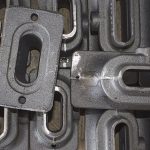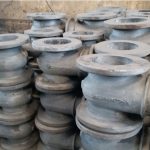What Are the Different Types of Metal Casting Process?
The metal casting process uses liquid material or molten metal poured into a cavity to design shapes and products. The final component undergoes various finishing techniques to form solid/hollow shapes and cast products. You can use them across a wide array of industrial and manufacturing applications. This is why it is advisable to choose the reliable Alloy Cast Iron Casting Manufacturer for high quality durable products and seamless finish.
Different Types of Casting Method
Casting is one of the oldest processes utilized for different purposes. Today, the advances in modern technology have widened its area of specialization. Each technique comes with certain benefits, and in this blog, we will discuss these methods in detail.
1. Sand Casting
The process of sand casting relies on silica-based material bonded with natural or synthetic sand. The sand type contains fine, spherical grains, tightly packed to form a smooth surface. The moderate degree of flexibility lowers the chances of tearing or cracking. You can further strengthen it by adding clay to achieve close bonds of the particles.
The experts pay special attention to the steps involved in the sand casting process. They make the pattern, create molds, melt the metal, pour and clean. It allows the fabrication of large components using both ferrous and non-ferrous materials. You can achieve an accuracy in finished good despite the low tooling cost.
2. Investment Casting
Also known as low wax casting, the method uses disposal wax to create varying cast patterns. You have to inject the wax into molds, further coated with a binding agent. Once the shell hardens, remove the wax, invert the pattern and heat it. The molten metal solidifies into a desired shape and you break the refractory shell.
Parts made from investment casting is used for automotive and the aerospace industry.
Investment casting offers the following advantage–
• Precision in dimensions, shape, and size
• Converting thin-walled parts into complex geometrical shapes
• Casting ferrous and non-ferrous metals
• Reliable surface finish and precise detailing of the final component
3. Die Casting
In this method, the manufacturers mold the material under high pressure. Common metals and alloys like aluminum, zinc, copper, and tin serve this purpose. You cn use this method to create products with closed size and shape tolerance. Further, you get the guarantee of consistency in dimension and uniform designing. It is efficient for high-volume product runs with a fast turnaround rate.
A proper understanding of the various casting method is crucial for concepts and performance. The professional casting manufacturer design premium quality products at affordable prices.




